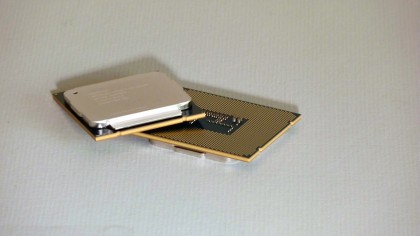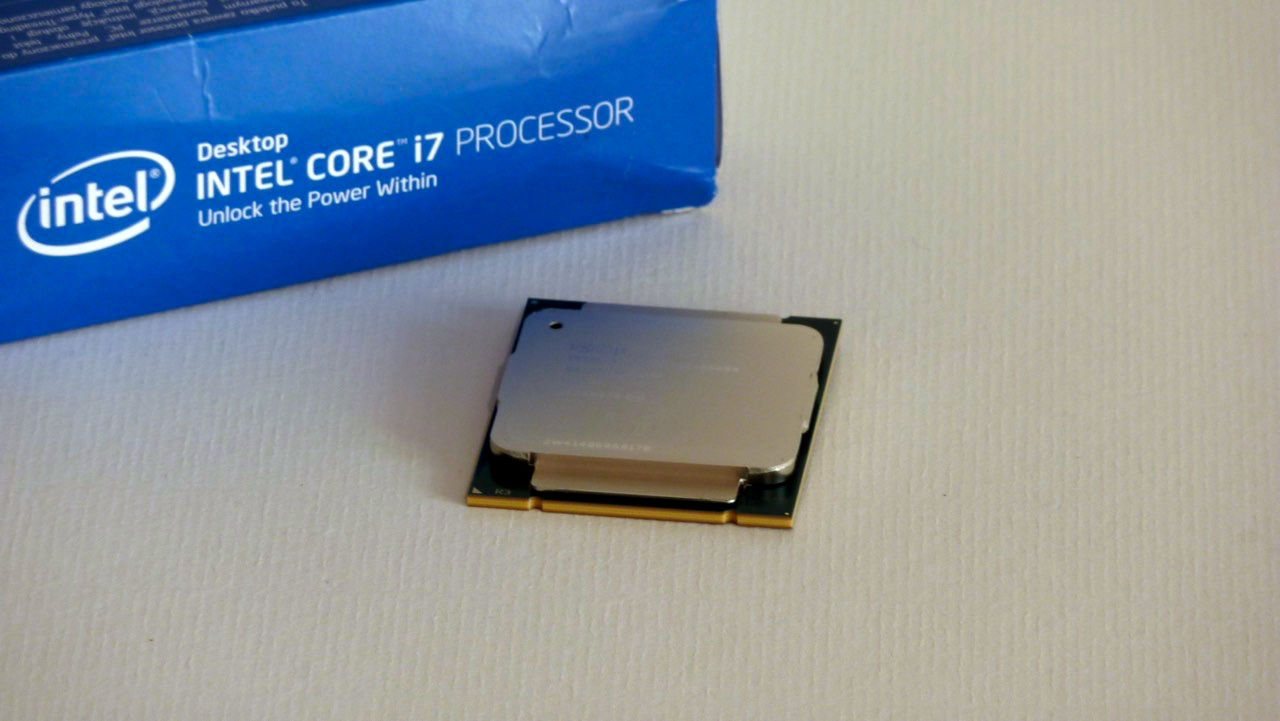TechRadar Verdict
Faster memory, more cores, and advanced storage makes Haswell E a brilliantly fast platform that raises the performance bar for desktop computing.
Pros
- +
Eight-core desktop computing from Intel
- +
Fast DDR 4 memory
- +
M.2 and SATA Express storage support
Cons
- -
Expensive
- -
Lack of backwards compatibility
- -
Not all software can take advantage of eight cores
Why you can trust TechRadar
With the launch of Haswell-E, Intel has introduced three new desktop processors and an updated chipset to support them, called X99. Although the new chips are based on a similar 2011-pin layout to the previous Ivy Bridge-E enthusiast processors, these processors are not backwards compatible with older generation motherboards. If you want one of these chips, you'll need to buy a new motherboard as well.
The new flagship model is the Core i7 5960X, which has eight physical processor cores, capable of running 16 threads simultaneously. Its standard clock frequency is 3 GHz, which goes up to 3.5 GHz when Turbo Mode kicks in. Shared between its eight cores is 20MB of level 3 cache, and support for 40 PCI-Express lanes. The chip retails for around £770 (around $1049, or AUS$1259).
Joining it is the £450 (around $675, or AUS$865) Core i7 5930K, a six-core processor that runs at 3.5 GHz, and 3.7 GHz in Turbo. It too supports 40 PCI-Express lanes, but only has 15MB of level 3 cache.
The most affordable of the new range is the £300 (around $450, or AUS$577) Core i7 5820K. It's another six-core model, running at 3.2 GHz, and up to 3.6 GHz in Turbo mode. It again has 15MB of cache, but only 28 PCI-Express lanes are supported.
The Core i7 5820K is the most affordable six-core processor Intel has ever made and in the last generation, Intel's lowest-price six-core Core i7 4930K cost over 25% more.
Having only 28 PCI-Express lanes in the 5820K will be a limitation if you're considering a multiple GPU setup or perhaps PCI-Express storage. But arguably if you're buying three graphics cards, then you can probably afford to splash out on a more expensive processor.
All three use Intel's hyper-threading technology, so the Core i7 5960X shows up as a 16-core processor in Windows.
Sign up to the TechRadar Pro newsletter to get all the top news, opinion, features and guidance your business needs to succeed!
It's of particular note that all three chips have a 140W TDP (Thermal Design Power), the highest thermal footprint of any desktop Intel processor to date. Processors in the Xeon E5 range, such as the formidable E5-2687W, are 10W higher.
No part of the Haswell-E processor is allocated to on-board graphics, so you'll need a separate card just to turn on and test the chip, or when employed in a non-graphics-focused environment (such as a server). Similarly, the processors ship without heat sinks, so you'll need to add a third-party cooler to your order.
The three new chips sit alongside Intel's Devils Canyon processors, a refresh of the Socket 1150 Haswell architecture with slightly increased clock speeds, which were released earlier this year.
The fastest Devils Canyon processor is the Core i7 4790K, a quad-core processor with a standard clock speed of 4 GHz, which can hit 4.4 GHz in Turbo Mode. This is considerably higher than any of the Haswell-E processors and, depending on the software you use, it may have a bigger effect on how well a particular software application runs than the increased number of cores you get with a Haswell-E chip.
The X99 chipset and DDR 4 memory

With the new processors comes the new X99 chipset. Intel has christened the new socket LGA2011-v3 to differentiate it from previous generations. With X99, there's been an overall bump to the standard specification, but also the introduction of some new technologies.
Intel now supports up to ten 6 Gb/sec native SATA ports, with RAID modes 0, 1, 5 and 10. Motherboard manufacturers can include up to 14 USB ports, six of which are USB 3, and they are directly connected to the chipset rather than by using a third-party controller.
Thunderbolt 2.0 is supported by the chipset as well, but only via add-on cards, since its inclusion adds a lot to the cost of the platform, so it makes sense for it to be optional.
As on Intel's Z97 platform, two new storage types are supported - SATA Express and M.2, which hook up to the chipset's PCI-Express lanes for faster SSD performance than you get from traditional SATA drives.
The biggest new addition with X99 is the use of 288-pin DDR4 memory, finally introducing a new memory standard to replace DDR3, which has been around for the best part of a decade. Speeds start at 2,133 MHz, but faster modules are available, right up to 3,000 MHz. As is usual with a new memory technology, latencies such as CAS and RAS have increased over DDR3, but overall memory bandwidth is still a lot higher, thanks to the faster speeds.
Memory can be arranged in a quad-channel setup, and will be sold in packs of two or four sticks, with support for 16 lanes in high-end motherboards. The Asus X99-Deluxe, which I was kindly loaned for my testing, can support eight DIMMs, four slots each side of the CPU, with the full quota of 10 SATA ports and 12 on-board USB ports, with a swish looking white cover over the back and lower sections.
Equally kindly, I was also loaned 16GB of Corsair 2400 MHz (PC4-19200) DDR4 memory. This pack of four unbuffered 4GB DIMMs costs £229 (around $299, or AUS$359) on the company's site. It carries a CAS latency of 16.
Currently, the maximum amount of memory you can squeeze into an X99 motherboard is 64GB, limited by the availability of higher-capacity DDR4 DIMMs, but in the future 128GB and beyond should be possible.
At the time of writing there are no options for budget, cut-down X99 motherboards, which is expected for an enthusiast platform. The Asus X99 Pro I used for testing costs about £200 (around $300, or AUS$384), which is the rough approximation for most competitors too.
A few Micro-ATX boards are cropping up now, if you're keen to build a smaller PC. But the majority of X99 motherboards are ATX models designed for larger cases.
Haswell-E or Xeon?
Intel's Xeon processors, aimed at workstation and server use, have offered eight cores for a while now. Xeon processors are an expensive prospect though, since they include additional functions that even the Haswell-E chips don't offer. Xeons are the only processors that can be used in multi-socket motherboards, with two or four chips used together. This requires additional circuitry, and is restricted to certain models of E5 or E7-series Xeons.
They also support ECC memory, unlike the Core i7 chips. The nature of electronic devices means memory errors can happen when a bit is accidentally flipped from a 0 to a 1. The chance is tiny, but real. ECC memory introduces checking to guarantee the integrity of data and ECC memory matters greatly in some mission-critical professional environments. When software is being designed where errors can have grave consequences, such as the design of jet engines, health care devices, or banking software, even the remotest chance of an error needs to be avoided. It matters a lot less in a gaming or media-focused desktop PCs.
